
Leveraging Pharmacists’ Training to Meet Patient Needs in Canada
NATIONAL BENCHMARK FOR PHARMACY PRACTICE USING PHARMACISTS’ FULL EDUCATION

Background
- Pharmacists are health-care providers who are experts in medications and how to use them safely and effectively. They are regulated professionals, which means they must meet high professional standards, follow strict regulations and abide by a code of ethics. They must also pass standardized written and practical exams before they can practice.
- In Canada, students studying to become a pharmacist earn a Doctor of Pharmacy (PharmD) degree. All pharmacy programs are accredited to meet national standards and though they vary in format and approach, all students complete rigorous educational training including a minimum of 6 years of post-secondary school education to earn their degree.
- The pharmacy program equips pharmacists with extensive knowledge about how drugs work in the body and how medicine can be used to prevent, treat and manage illness. Pharmacists learn about treating conditions related to all systems in the body, including everything from infectious diseases and organ dysfunction to neurological disorders and cardiovascular health.
- They are trained to help patients manage short-term illnesses like a cough and cold, chronic conditions like asthma and health-related lifestyle changes like quitting smoking. With an unwavering commitment to patient safety, pharmacists use critical thinking, professional judgement and evidence-based medicine to help patients and other health-care providers make the best clinical decisions when it comes to medications.
- Many pharmacists also have additional qualifications such as residency training and certifications that equip them with advanced competencies to support patients in specialized areas of practice.
- This reference showcases the health-care services that pharmacists are trained and educated to provide. Not all pharmacists will choose to offer all the services outlined within this document, however, no matter their location, pharmacists should be enabled to use their professional autonomy, judgement and skills to support their patients and communities as appropriate, without being hindered by regulatory or environmental restrictions.
There are 5 key areas of pharmacists' knowledge and skills.
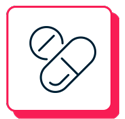
Dispensing, drug supply
management and compounding
- Dispensing
Pharmacists carefully review and assess whether prescriptions are safe and appropriate for each person. They consider factors like allergies, reason for treatment, effectiveness of the drug, food and drug interactions, cost and ease of use. They also provide advice to patients about their medications and health conditions, including topics like managing side effects, living with chronic conditions, and preventing illness. - Managing drug supply
Pharmacists promote the appropriate use of medications to help protect our drug supply. In the event of a drug shortage or product recall, pharmacists work behind the scenes to make sure patients don’t miss out on necessary treatments. This can involve finding an alternative supply of the drug or suggesting and prescribing substitutes when needed. - Compounding
Sometimes drugs available on the market aren’t suitable for a person and require a personalized approach. In this case, some pharmacists can create customized medications by mixing or altering ingredients to meet an individual’s specific needs, a process called compounding.
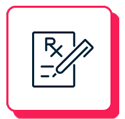
Assessment and
prescribing
- Assessment
Pharmacists are educated to assess symptoms and perform condition-specific examinations, enabling them to independently assess, prescribe and manage common conditions*. - Monitoring chronic conditions
Pharmacists have the education and training to recommend and prescribe devices to help patients manage things like blood sugar and blood pressure. - Complex medication assessment and care plans
Pharmacists can assess for drug therapy problems by reviewing a patient’s medical history, overall prescription and non-prescription medications, herbal and natural health products, vitamins and other treatments. Personalized recommendations and custom care plans can also be created to optimize a person’s health priorities and well-being. - Collaboration and referral
When additional care is needed, pharmacists work closely with other health professionals or refer patients for further support (e.g., when urgent or specialized care is needed). - Prescribing
Pharmacists have the knowledge and skills to safely and effectively start, maintain and modify prescriptions, including controlled drugs and substances. They can prescribe for any condition once there is an assessment or diagnosis—whether conducted by another health professional or, in the case of common conditions, by the pharmacist. This includes:- Initiating and adapting prescriptions
Pharmacists can start new medications and can make changes to prescriptions, like changing the dose, type or schedule of a medication to better suit the patient. If appropriate, they might switch a medication to a safer or more effective alternative, a process called therapeutic substitution. - Extending or renewing prescriptions
Pharmacists can extend or renew prescriptions to help ensure patients don’t go without their drugs. They can assess a patient and recommend continued treatment. - Deprescribing
Pharmacists can help patients safely decrease the dose or discontinue drugs that are no longer needed or appropriate for them.
- Initiating and adapting prescriptions
* For clarity, “common conditions” refers to those frequently encountered in primary care settings and generally managed using well-established clinical guidelines. This includes a range of acute and chronic conditions such as respiratory, dermatologic, gastrointestinal, and musculoskeletal conditions.
Some pharmacists may acquire additional competencies beyond this baseline through experience or post-graduate training, enabling them to assess and prescribe in more advanced or specialized areas.
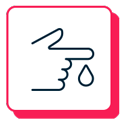
Testing, screening
and monitoring
- Lab testing
Pharmacists have the knowledge and skills to order and interpret lab tests and results. They can explain what they mean, making sure patients get the right care based on their health needs. For example, using kidney function tests to recommend medication changes or highlight an issue to another health-care provider. - Point-of-care and diagnostic testing
Pharmacists are capable of performing convenient, in-pharmacy tests to check on things like blood sugar, cholesterol or lung function, as well as screen for strep throat and sexually transmitted infections. - Data monitoring
Pharmacists know how to track and interpret health data from medical devices like blood pressure and blood sugar monitors and health apps so they can provide tailored advice. - Adjusting medications based on lab tests
Using lab results, pharmacists help adjust medications that require close monitoring for conditions like bipolar, blood and seizure disorders (e.g., lithium, warfarin, phenytoin).
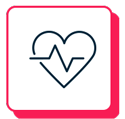
Patient education, health promotion
and preventative care
- Patient education
In addition to providing medication-specific consultations when dispensing drugs, pharmacists educate and advise patients about their overall health conditions. They have knowledge to offer advice on beneficial lifestyle changes, encourage self-care to help manage health challenges and can recommend interventions to prevent disease. - Interprofessional collaboration
Pharmacists offer clinical consultations, evidence-based education and drug information services to other health-care professionals, enhancing team-based care. - System navigation
They guide patients through the health-care system, including making referrals to other providers when needed. - Medical devices
Pharmacists teach patients how to use medical devices and supplies at home, like inhalers or blood sugar monitors, to ensure people get the most benefit from their treatment. - Harm reduction
Pharmacists play an important public health role in minimizing harm associated with using drugs by educating patients and caregivers, including persons who use opioids or are at risk of opioid use disorder.
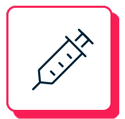
Drug administration and
vaccine services
- Drug administration
Pharmacists can help patients learn to administer medications that use different routes into the body (e.g., topical, nasal, intraocular). - Inhaled medications
Pharmacists can help patients learn how to correctly take their inhaled medications, such as those needed for respiratory illnesses like asthma or COPD. - Injections
Pharmacists have the skills and training to administer all types of injections used to get a drug into the body. For example under the skin or into the muscle (e.g., insulin, vitamin B12). - Vaccinations
Pharmacists can advise on, prescribe and administer routine childhood vaccines, vaccines for diseases like influenza, pneumonia and shingles, as well as those that may be required for travel.
Pharmacists providing health care
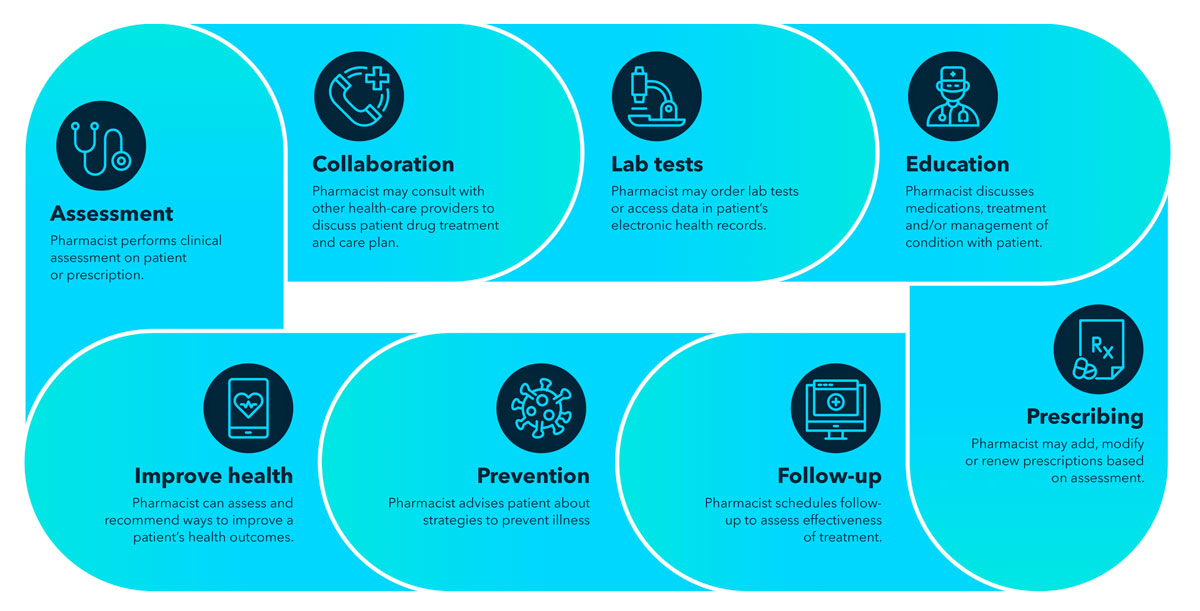
Patient journey: Diabetes
Dispensing and drug management
Patient education
Testing and monitoring



New diagnosis &
medication start
- Patient is diagnosed with diabetes and prescribed new drug.
- Pharmacist clinically assesses patient and prescription and dispenses medication.
- Patient engages with pharmacist to learn about their new condition, how the drug works, how to take the drug and what to expect while using it.
- Pharmacist shows patient how to monitor their blood sugar and answers any questions they have.
Testing and monitoring
Assessment and prescribing
Dispensing and drug management



Monitor and follow-up
- Patient and pharmacist discuss the plan for follow-up touchpoints to discuss potential side effects, medication effectiveness and adherence.
- Pharmacist does regular follow-up, which may include ordering lab work or using a point-of-care test (i.e., HbA1C) to monitor sugars and manage the chronic condition.
- Pharmacist adjusts, renews or adds medications as required and collaborates with the patient and other providers in the circle of care.
Testing, screening and monitoring
Assessment and vaccine services
Patient education, health promotion and prevention



Preventative care & risk reduction
- Pharmacist schedules follow-up visit to monitor patient’s condition, advise on preventative health measures (i.e., vaccines) and provide appropriate care.
- Pharmacist provides further education on lifestyle measures that help patients reach treatment goals (e.g., diet and exercise advice, smoking cessation) and offer guidance on how to minimize complications from diabetes (e.g., regular foot/eye exams).
- Pharmacist refers to other providers if follow-up or specialized care is required.
- Through patient engagement and education, pharmacist supports improved self-management, confidence, knowledge and skills.
Patient journey: Primary care services
Assessment and prescribing
Patient education and monitoring


Common condition
- A patient visits pharmacy to be assessed for an uncomplicated urinary tract infection (UTI).
- Pharmacist evaluates patient using clinical guidelines to assess signs and symptoms.
- Pharmacist prescribes an antibiotic, discusses medication use with patient and answers questions.
- Pharmacist creates a follow-up plan to assess efficacy, safety and emergence of any red flags.
Assessment and prescribing
Patient education and prevention
Vaccine administration and services



Travel consultation
- Patient visits their local pharmacy for clinical advice and guidance to prepare for an upcoming overseas trip.
- Pharmacist reviews the patient’s current prescription medications and ensures they have enough supply on hand for their trip.
- Pharmacist offers health tips for travel and recommends over-the-counter remedies and first-aid supplies to pack.
- Pharmacist assesses, recommends, prescribes and provides appropriate travel vaccines and medication.
Education and health promotion
Assessment and prescribing


Harm reduction
- A patient is concerned about their increasing dependance on pain medication.
- Pharmacist conducts an assessment and evaluates options to optimize pain treatment.
- Pharmacist discusses opioid agonist therapy (OAT) services and take home naloxone kits available at the pharmacy.
- The pharmacist works with the patient and their circle of care to safely adjust their medications to align with their personal health goals.
